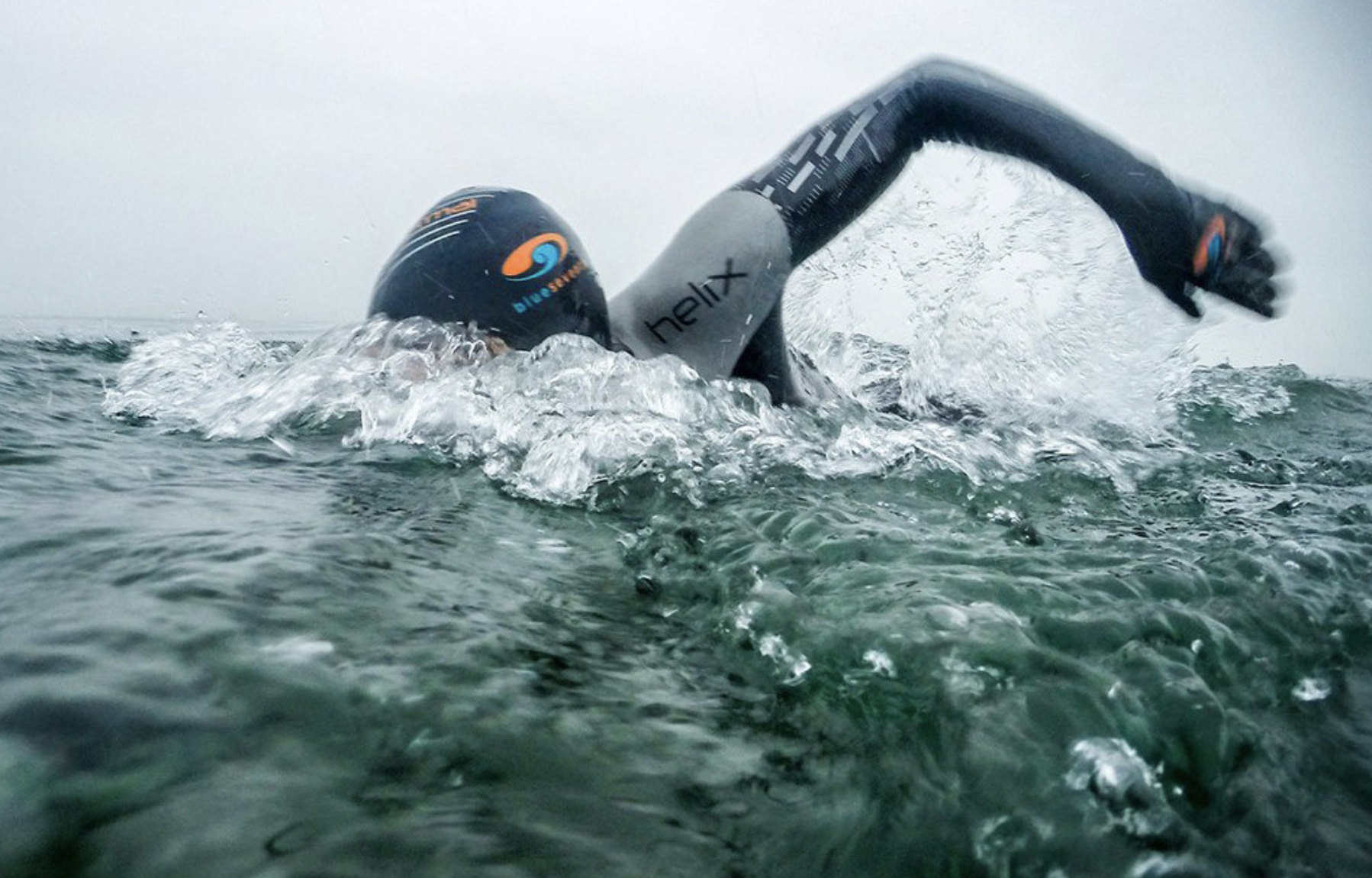You don’t need to be “tough” when it comes to cold racing, you need to be prepared. You are only as good as your preparation and gear. ….You should let the suffering of racing be the challenge of the day and less the conditions. While it may not be possible to be comfortable all the time in extreme conditions, it is possible to be well enough prepared so they are less of an impact to your day. ~Tristar Athletes Coaches
definition of cold; ~48 degrees and less at race start.
-For triathlons, chose to remove any wet clothing prior to riding. (or opt to not wear your race kit or gear under your wetsuit.)
-You will need a warming layer to retain heat to warm the body. This is a layer of insulation that may be a vest or full jacket that you can ride in. Often times athletes will wear too thin of a layer in an attempt to be “warm”. At these lower temperatures its better to over-do it and generate body heat until you are warm enough. When you are warm you can always peel these layers off and tuck them into the top / back of your race kit.
-Protect the chest; The core temperature of the body once down is very hard to raise up. The last line of defense is your chest and wearing warm gear such as jackets and vests are crucial to preventing cold and fatigue associated with it.
-Chose gear that is layered and can open in the front for cooling when you do warm up. (Many races start out this way and can swing upwards to warm even hot conditions.
-Windy? Wear a vest or full jacket to block wind that may penetrate your chest and chill you. Once the “cold” temps get into your chest on a bike it is very easy to slip into hypothermia. Day is done and a DNF left next to your name!
-Rainy?? Full on rain gear is necessary and may help with wind as well as rain. This type of jacket often will hold in excess body heat so long as you are moving. (Due to the fact that it is not as breathable) Many cycling jackets have ventilation for moisture and temperature control but in very cold conditions you may just opt to leave it on.
-Keeping the head warm; the head loses heat rapidly and a hat may be the best bang for the buck. A thin cap may not do it in cold temperatures and a full on winter hat will be ideal. If you have many other pieces of warm clothing we are suggesting you may not need a hat, however, the head is an easy thing to keep warm.
-Hands can get overwhelmed easily as they have far less circulation than other parts of the body. The hands will not end your day however unless its closer to freezing temperatures and especially when wet. Again, in most cases over do it and you can always take the gear off. If you come to Raceday unprepared you will fail!
-Feet; Similar scenario to the hands and like the hands can get very cold and uncomfortable but not likely to end your day. Wool socks are a great addition to cool / wet races where they retain heat better than regular cooling socks. Booty covers are also helpful for some extreme events.
-Arm warmers; very popular as they can be rolled down once you heat up and also are easy to put on when you are in motion. For this reason they are an ideal warming tool especially for cycling when your arms are exposed. Tip; for a quicker transition with arm warmers roll them up like a donut and slip them on your arms in transition. You can leave them on your aerobars and roll them quickly while rolling on the bike.
Other considerations
“What happens if I heat up to much?”
-Take off a layer, open up the front of a jacket / vest or peel off / down your arm warmers. Simple but effective! With experience you can easily self regulate and even remove gear before you get too hot. Trust us you will rip that gear off once you start to warm up.. if you dont start the race with it and you don’t have it out on the course it will be too late once you are hypothermic and its game set match at that point.
“Wont I be slower with all that gear?”
Not if you are warm! If you are cold you will be dumping massive amounts of energy to keep warm. When you start to shiver your body is burning precious energy you need to race. The small amount of time to put your warm gear on will not stop you from racing well. Try to chose gear that is fitting to the body for cycling and comfortable as well. "(“Technical”)
“What about longer races that finish in the evening”
-We suggest adding extra warm gear for the run in your T2 bag if you are doing a triathlon or ultra distance race.
Stay warm and stay fast! ~The Tristar Athletes Coaching staff
Learn more about swim preparation and staying warm in open water cold swims here or below.



